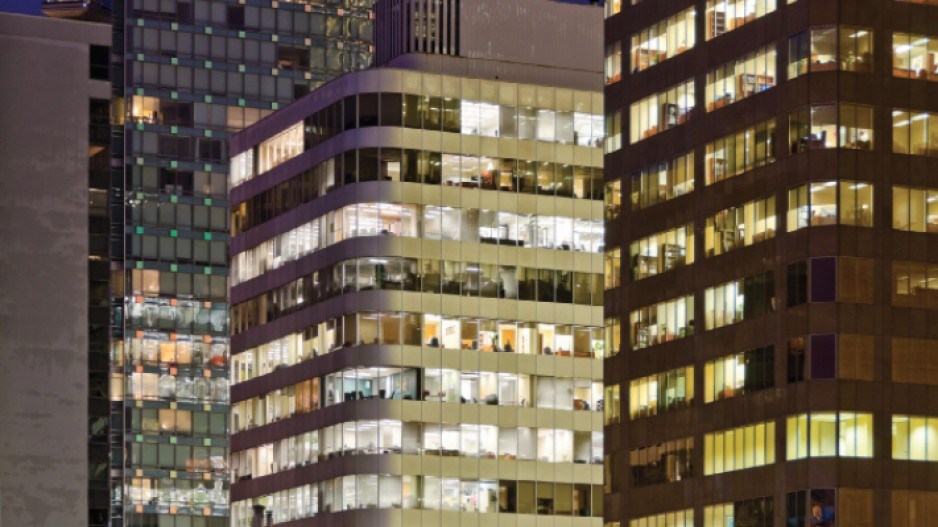Slow times
Cushman & Wakefield Ltd.'s review of the Vancouver office market for the first three months of 2014 strikes a particularly bearish note.
“In downtown Vancouver there are currently over 60 options for spaces of 10,000 square feet or more across all building classes, including spaces not yet being formally marketed. This is a stark contrast to previous quarters when there was limited availability of larger blocks of space,” it reports.
The volume of space pushes the overall vacancy rate downtown to 5.9% from 4.6% a year ago, while regional vacancies rose to 8.7% from 7.8% last year.
The surge reflects ongoing negative absorption across the market, with 39,263 square feet returned in the first quarter of this year.
But in an echo of CBRE Ltd. senior vice-president Kevin Nelson's comments at the recent NAIOP review of the market, Cushman & Wakefield doesn't think new projects like Credit Suisse's tower at 475 Howe Street will hurt the market.
“Concern has been raised that the office inventory in the city will be overbuilt given moderate tenant demand; however, this could also be a case of ‘good timing,'” the report says.
While tenants will likely return space to the market throughout 2014, Cushman & Wakefield expects occupancies to begin rising in the middle of 2015 as the economy revives.
Picking up
The office market isn't the only one feeling pressure.
Reports from various brokerages point to solid demand for small to mid-size industrial spaces, while large blocks of older, “commodity” space go unfilled.
CBRE reports that small and mid-bay tenants drove the majority of market activity in the first quarter of 2014, with many users opting for newer, A-class space that meets demand for features such as high ceilings. Cushman & Wakefield's report on the sector explained the shift in terms of the demand by these users for high-quality space versus “older, less functional buildings.”
Still, overall demand was subdued, with a handful of markets seeing negative net absorption in the first quarter. The region as a whole saw just 85,280 square feet of space absorbed, according to CBRE, with an overall availability rate of 6.6%.
Avison Young attributed the sluggish demand to “a moribund provincial economy” over five quarters, yet took heart from 2.2 million square feet of new construction.
“Developers are gearing up to accommodate future anticipated demand,” Avison Young said in a survey of industrial markets across Canada and the U.S. “The remainder of 2014 will see the delivery of new product and set the stage for the economic expansion forecasted for 2015 and beyond.”
Value sought
The one type of real estate that's a matter of some concern right now is retail, with many big-box retailers paring back and several brand names planning stand-alone stores.
During last month's spring meeting of the Urban Land Institute (ULI) in Vancouver, several participants expressed admiration for the way local geography – read, urban density – has spared the region the tracts of suburban shopping malls that plague other cities.
During the “experts' forecast” towards the end of the ULI meeting, speaker Lee Menifee – then managing director, research and strategy, for American Realty Advisors, now head of Americas investment research at Prudential Real Estate Investors – said sentiment regarding bricks-and-mortar retail space was such that U.S. retail assets could be had for a third of replacement cost.
“If you were looking for the greatest opportunities for value-add, you would really have to go with retail,” he said.
But the value won't necessarily come from a better shopping experience.
“The [retail] tide is not behind you as you're doing this,” though repositioning is what makes sense, said Jon Southard, principal and director of forecasting with CBRE Econometric Advisors in Boston.
True, former large retail premises in the 300 and 500 blocks of West Broadway were snapped up and made into homes for No Frills and Michaels. Yet the transformation of Burnaby's Station Square into a dense, mixed-use community, and plans for densification of the Brentwood and Oakridge shopping centres, show that former retail sites are often best transformed by creating homes and offices for potential shoppers on the same patch of ground.




